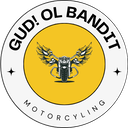Revving Up Knowledge: Unveiling the Thrilling World of Motorcycle Fun Facts
The Kawasaki Ninja H2R: A Speed Icon Redefining Motorcycling Limits
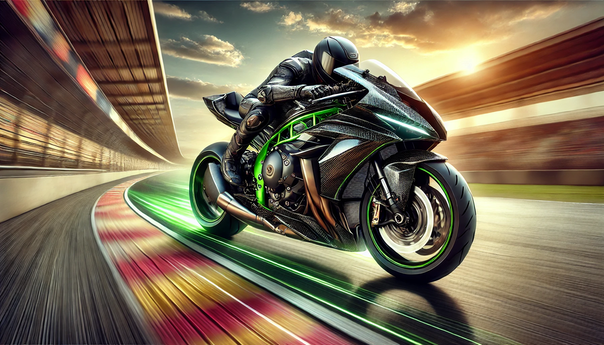
Discover the Kawasaki Ninja H2R—a masterpiece of speed and engineering, reaching over 249 mph and setting new performance standards for modern bikes.
The Ultimate Speed Machine
Motorcycle enthusiasts dream of power, speed, and precision all rolled into one. Few bikes have ever come close to capturing that dream-like the Kawasaki Ninja H2R. It isn’t just a motorcycle; it’s a legend on two wheels. Capable of exceeding 249 mph (400 km/h), the Ninja H2R stands as a testament to what human innovation can achieve when boundaries are pushed. This motorcycle is not just about numbers—it’s about an unparalleled riding experience.
In this guide, we will dive deep into what makes the Ninja H2R so special: its engineering marvel, jaw-dropping performance, and the sheer thrill it offers. If you’re looking to understand one of the most powerful motorcycles ever built, buckle up for an exhilarating ride.
Kawasaki Ninja H2R: The Birth of a Masterpiece: Redefining the Limits of Motorcycle Engineering
When Kawasaki unveiled the Ninja H2R, the world stood still. It was designed not as a street bike but as an unrestrained track-only machine—a beast built to showcase Kawasaki’s engineering prowess. Unlike other motorcycles constrained by road regulations, the H2R was free to push speed and performance limits.
The Ninja H2R was developed with Kawasaki Heavy Industries’ (KHI)’s expertise in aerodynamics, turbo machinery, and aerospace engineering. Drawing inspiration from their involvement in multiple industries, Kawasaki combined decades of technological advancement into this machine.
The Unrivaled Supercharged Engine
At the heart of the Ninja H2R is its groundbreaking 998cc inline-4 supercharged engine. The supercharger, developed entirely in-house, is what separates the H2R from conventional bikes. This unit delivers an astonishing 310 horsepower (326 hp with ram air), numbers previously unheard of for production motorcycles.
The supercharger is not your average forced induction system. Kawasaki designed it to deliver maximum performance without an intercooler. This clever engineering ensures the bike stays lightweight while still harnessing immense power. The result? A motorcycle that accelerates with a ferocity that is simply unmatched. #KawasakiH2R #SuperchargedBeast #EngineeringMarvel
Breaking Barriers: Top-Speed Performance: 249+ MPH—The Numbers Don’t Lie
The Kawasaki Ninja H2R’s headline achievement is its blistering top speed of over 249 mph (400 km/h). To put that into perspective, it’s faster than most sports cars, private planes, and even some race bikes. Few motorcycles—even in the supersport category—come close to these speeds.
Why the Ninja H2R Achieves Such Speeds
The magic lies in a combination of factors:
1. Supercharged Power Delivery: With 310 horsepower on tap, the H2R doesn’t just go fast—it surges forward like a rocket.
2. Aerodynamic Excellence: Kawasaki incorporated aerodynamic wings and carbon-fiber fairings designed to provide downforce at extreme speeds. The result is stability and reduced drag.
3. Lightweight Construction: The trellis frame, crafted with precision, offers a perfect balance of rigidity and lightness, keeping the bike agile without sacrificing control.
4. Advanced Electronics: Features like Kawasaki Traction Control (KTRC), Kawasaki Launch Control Mode (KLCM), and Kawasaki Quick Shifter ensure the H2R’s immense power is harnessed efficiently.
Thanks to this perfect harmony of power, engineering, and aerodynamics, the Ninja H2R effortlessly sets records that other motorcycles can only dream of. #TopSpeedMotorcycle #PerformanceUnleashed #NinjaPower
Design and Aesthetics: Beauty Meets Beast: Form Follows Function in a Stunning Package
The Ninja H2R isn’t just about raw speed; it’s also a visual masterpiece. Kawasaki has ensured that every inch of this motorcycle is both functional and awe-inspiring.
Aerodynamic Design
The bike features aggressive carbon-fiber bodywork with sharp lines that scream speed. The most striking elements are the aerodynamic winglets, which aren’t there just for show. These wings provide essential downforce, improving high-speed stability and ensuring that the rider remains in control even when pushing 249+ mph.
The Kawasaki Mirror Paint
One of the most unique design touches is Kawasaki’s exclusive mirror-coated black paint. Under sunlight, this paint transforms the H2R into a shimmering piece of art. It’s reflective, and sleek, and adds to the bike’s futuristic appearance. Combined with its carbon fiber accents, the H2R is as stunning at rest as it is in motion. #NinjaDesign #MotorcycleArt #SuperbikeStyle
Technology and Features: The Future of Motorcycling: Electronics and Engineering in Perfect Synergy
Riding a motorcycle as powerful as the Kawasaki Ninja H2R requires advanced technology to keep the experience safe and enjoyable. Kawasaki has outfitted the H2R with some of the most cutting-edge electronic features available.
Key Technologies:
KTRC (Traction Control): Prevents wheel spin and maintains stability when accelerating.
KLCM (Launch Control): Delivers maximum acceleration off the line without losing traction.
KQS (Quick Shifter): Allows for seamless upshifts and downshifts without using the clutch.
Cornering Management: Ensures stability even at extreme lean angles.
Ohlins Electronic Steering Damper: Adjusts damping based on riding conditions for enhanced handling.
These technologies work together to make the Ninja H2R not just a speed demon but also a bike that inspires confidence in its rider. #MotorcycleTech #SmartRiding #KawasakiInnovation
The Riding Experience: Unleashing the Beast: What It’s Like to Ride the Ninja H2R
Riding the Kawasaki Ninja H2R is an experience unlike any other. From the moment you twist the throttle, you are greeted with an intoxicating rush of power. The sound of the supercharger winding up is enough to send chills down any rider’s spine.
Power Delivery
The acceleration is relentless. You don’t just ride the H2R—you hold on for dear life as it launches forward with explosive power. Thanks to the advanced electronics, however, this immense force remains manageable, allowing riders to explore the bike’s limits with confidence.
Track-Only Precision
Because the Ninja H2R is a track-only motorcycle, it is designed for precision handling. Every corner, every straight, and every braking point becomes an opportunity to push the bike further. The balance of power, aerodynamics, and technology makes it a true track weapon.
A Sound Like No Other
The Ninja H2R’s engine note, amplified by the supercharger, is unlike anything else on two wheels. It screams authority, ensuring that everyone within earshot knows this isn’t an ordinary bike. #RidingThrill #TrackPerformance #SpeedExperience
A Legacy of Speed and Innovation
The Kawasaki Ninja H2R is more than just a motorcycle; it’s a statement of what is possible when technology, engineering, and passion come together. It redefines the limits of performance, inspires awe, and sets a benchmark that few others can match. For motorcycle enthusiasts and speed lovers, the H2R is a dream made real.
If you ever get the chance to witness or ride this masterpiece, take it. The Ninja H2R is not just the fastest production motorcycle—it’s a piece of history on two wheels. #KawasakiH2R #MotorcycleLegend #BeyondLimits
Mastering Motorcycle Weave: Causes, Solutions, and How to Ride Confidently
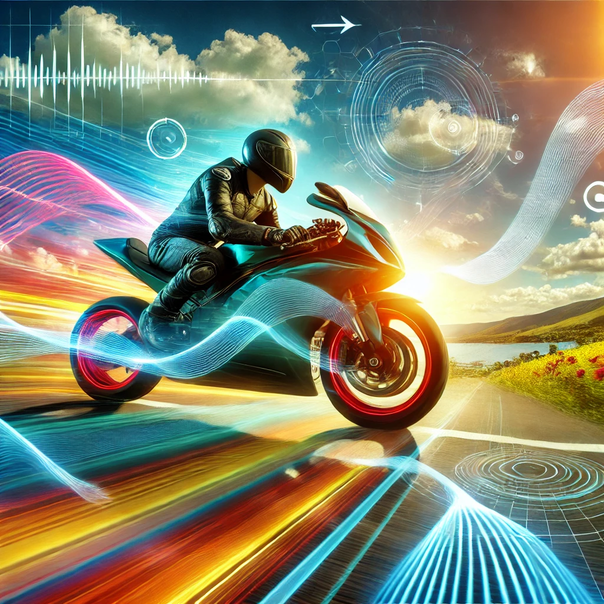
Learn what motorcycle weave is, why it happens, and how to fix it. Ride confidently with our expert tips on stability and safety.
What is a Motorcycle Weave?
A Brief Overview of the Wobble Phenomenon
Motorcycle weave—also known as speed wobble or tank slapper—is a term every rider should understand. It refers to an unsettling side-to-side movement of a motorcycle, often felt through the handlebars or the bike itself. This movement can range from minor vibrations to intense, uncontrollable oscillations, particularly at higher speeds.
At its core, a weave is a stability issue. Motorcycles, though nimble and powerful machines are subject to physics. When something interrupts the dynamic balance of your bike—be it tire pressure, suspension settings, or even your riding posture—a weave can arise.
Understanding weave is vital for every rider, from seasoned pros to beginners. With proper knowledge, you can handle, prevent, and overcome it. And that’s exactly what we’re about to dive into. Let’s explore the causes, solutions, and tips to ensure you stay confident and in control.
What Causes Motorcycle Weave?
Unpacking the Reasons Behind the Shake
Motorcycle weave doesn’t happen out of nowhere. It is usually triggered by one or more contributing factors. Let’s take a closer look at the most common culprits:
1. Incorrect Tire Pressure Tires are your bike’s first point of contact with the road. Low or uneven tire pressure can drastically affect your motorcycle’s stability. Underinflated tires have a larger contact patch, which can cause irregular movements that translate into a weave.
2. Tire Wear and Condition Worn-out tires or uneven tread can cause instability, especially at higher speeds. If the front and rear tires are mismatched in size, type, or wear pattern, they won’t work harmoniously, leading to oscillations.
3. Improper Suspension Setup Suspension settings that are too soft or too stiff can contribute to weave. The suspension helps your bike absorb road imperfections and maintain stability. Incorrect preload, damping, or sag can throw off your bike’s balance.
4. Aerodynamic Instability Aerodynamics plays a key role in stability. Wind resistance, particularly at high speeds, can push against your bike and affect its balance. Add a poorly packed top box, saddlebags, or bulky gear, and you’ve got the perfect recipe for weave.
5. Rider Input and Posture Believe it or not, you might be contributing to the problem. A death grip on the handlebars or a tense riding posture can amplify small movements into noticeable wobbles. Relaxing and maintaining a proper riding position can make all the difference.
6. High Speeds At high speeds, your motorcycle experiences greater aerodynamic forces. If other factors like tire pressure or suspension setup are already suboptimal, the added speed amplifies the problem, leading to a weave.
7. Mechanical Issues Misaligned wheels, loose steering bearings, or even worn bushings can cause your bike to feel unstable. Regular maintenance is critical to catching these issues early.
By identifying the root cause of the weave, you can take the necessary steps to address it and ride with confidence. Now, let’s move on to what you can do to prevent and correct motorcycle weave.
How to Prevent Motorcycle Weave
Staying Ahead of the Problem
Prevention is always better than cure, and this certainly applies to motorcycle weave. Here are actionable tips to ensure your bike remains stable and wobble-free:
1. Check Your Tire Pressure Regularly Maintaining the correct tire pressure is one of the simplest yet most effective ways to prevent weave. Check your pressures before every ride—especially long-distance journeys. Refer to your owner’s manual for the recommended settings.
2. Inspect Your Tires Keep an eye on tire condition and tread wear. Replace tires that are worn unevenly, cracked, or nearing the end of their life cycle. Always ensure the front and rear tires match in type and performance.
3. Optimize Your Suspension A well-set suspension can significantly improve your bike’s stability. Adjust the preload, damping, and sag to match your riding style, weight, and road conditions. Don’t hesitate to consult a professional for a custom setup.
4. Distribute Your Weight Properly When packing for a ride, ensure your luggage is balanced and secured. Avoid overloading the rear of the bike, as this can create aerodynamic instability. Keep the weight low and centered whenever possible.
5. Relax Your Grip A firm grip on the handlebars is necessary, but a death grip can amplify small movements. Relax your upper body, allow the bike to flow naturally, and focus on keeping a steady posture.
6. Maintain Your Bike Regular maintenance is key to preventing mechanical issues that cause weave. Inspect wheel alignment, steering bearings, and the suspension system regularly. Tighten any loose components and replace worn parts promptly.
7. Ride Smoothly Smooth throttle inputs, braking, and cornering help maintain stability. Avoid abrupt maneuvers that may disrupt your bike’s balance.
By incorporating these habits into your riding routine, you can minimize the risk of encountering a motorcycle weave.
What to Do if Your Bike Starts to Weave
How to Regain Control in the Moment
Despite your best efforts, motorcycle weave can sometimes occur. If you find yourself in this situation, follow these steps to regain control:
1. Stay Calm Panicking will only make the situation worse. Take a deep breath, relax your grip, and focus on handling the bike.
2. Loosen Your Grip on the Handlebars Allow the bike to stabilize itself. A tense grip can amplify the weave. By loosening up, you give the bike a chance to correct naturally.
3. Gradually Roll Off the Throttle Avoid chopping the throttle or braking suddenly—this can exacerbate the wobble. Instead, gently reduce speed in a controlled manner.
4. Keep Your Body Relaxed Tension can transfer unnecessary inputs to the bike. Focus on staying loose and centered.
5. Shift Weight Forward If possible, shift your weight slightly forward. This can help stabilize the front end of the motorcycle.
6. Check Your Environment If road conditions (such as strong crosswinds or uneven surfaces) are contributing to the weave, adjust your riding accordingly.
Remember, motorcycles are inherently stable machines. By remaining calm and composed, you allow the bike to stabilize and correct itself.
The Role of Experience and Practice
Build Confidence to Master Any Situation
Motorcycle weaving can feel intimidating, but it’s a challenge that can be mastered with knowledge and experience. Practicing good riding habits, keeping your bike well-maintained, and staying aware of potential triggers will make all the difference.
Spend time understanding your bike’s behavior at different speeds and conditions. Consider taking advanced riding courses that cover motorcycle dynamics and emergency handling. The more experience you gain, the more confident and capable you’ll feel when faced with unexpected situations.
Ride with Confidence and Control
Motorcycle weave is a manageable challenge. With the right knowledge, preparation, and practice, you can overcome it and ride with greater confidence than ever. Stay proactive with maintenance, check your tires regularly, optimize your suspension, and most importantly, trust yourself and your bike.
Riding a motorcycle is about freedom, adventure, and joy. Don’t let the fear of a wobble hold you back. Instead, arm yourself with these tips, embrace the ride, and enjoy every mile with confidence.
What are Your Thoughts?
Have you ever experienced a motorcycle weave? Share your tips, experiences, or questions in the comments below! Let’s keep the conversation going.
Motorcycle Slang: "Cager" and the Language of the Open Road.
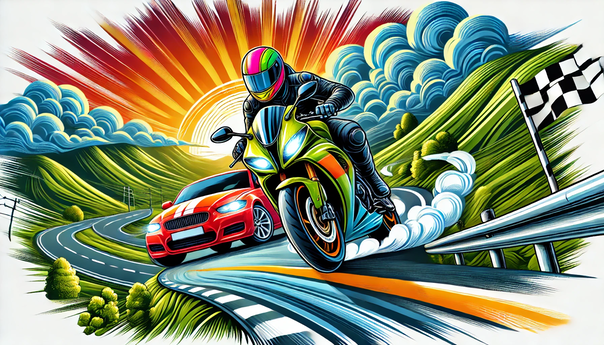
Explore the meaning and history of "cager," a term bikers use for car drivers. Learn how motorcycle slang shapes culture and builds community.
Motorcycle culture is vibrant, rich, and deeply rooted in its unique language. One of the most iconic terms in the biker lexicon is "cager," a word used to describe car drivers. The term carries with it a sense of camaraderie among riders, as well as a subtle nod to the freedom and adventure that motorcycling offers. But where did this term come from, and why is it so significant in motorcycle culture? Let’s dive into the meaning, history, and nuances of the word "cager" while exploring the broader context of motorcycle slang.
What Does "Cager" Mean?
Definition and Origins
"Cager" is a term used by motorcyclists to refer to car drivers. It’s derived from the idea that people in cars are essentially "caged" within their vehicles. Unlike bikers who enjoy the open air and direct connection to the road, drivers are separated from their surroundings by metal, glass, and plastic.
Why Do Bikers Use It?
The term reflects a fundamental difference in experience. Motorcycling is all about freedom, immersion, and the thrill of the ride. Cars, while practical and comfortable, lack this visceral connection. By calling car drivers "cagers," bikers emphasize their unique perspective on the road. #Cager #MotorcycleSlang #RideFree #BikerCulture #OpenRoad
The History of the Term "Cager"
Emergence in Biker Culture
The word "cager" likely gained popularity in the mid-20th century, a period when motorcycle culture was booming. As more people embraced motorcycles for leisure and commuting, the distinction between bikers and car drivers became more pronounced.
Cultural Significance
The term also serves as a playful but pointed critique of mainstream, car-centric society. For bikers, the car represents conformity and restriction, while the motorcycle symbolizes rebellion, independence, and freedom. #BikerHistory #MotorcycleCulture #FreedomOnTwoWheels #CagerOrigins
How "Cager" Highlights the Biker Experience
Freedom vs. Confinement
Motorcyclists often describe the sensation of riding as liberating—an escape from the confines of everyday life. The term "cager" encapsulates this contrast. Bikers experience the wind, the sun, and the rain directly. Cagers, by contrast, remain shielded and detached.
Community and Identity
Using terms like "cager" strengthens the sense of community among bikers. It’s an insider term that reflects a shared understanding of what it means to ride. #RiderVsCager #TwoWheelLife #OpenRoadVibes #BikerIdentity
Other Motorcycle Slang and Their Meanings
Beyond "Cager"
The world of motorcycle slang is as diverse as the riders themselves. Here are a few terms that every biker should know:
Squid: A reckless rider, often inexperienced and prone to taking unnecessary risks.
Gremlin Bell: A small bell hung on a bike to ward off bad luck.
ATGATT: An acronym for "All the Gear, All the Time," emphasizing safety.
Twisties: Roads with lots of curves, beloved by riders for their challenge and thrill.
Why Slang Matters
These terms create a sense of belonging and shared culture. They’re also practical, allowing riders to communicate quickly and effectively. #MotorcycleSlang #RiderLingo #TwoWheelCulture #BikerTalk
Riding Safely Around Cagers
Staying Visible
Motorcyclists often emphasize the importance of visibility. Cagers, who are used to looking out for other cars, can easily overlook a motorcycle. Bright gear, proper lane positioning, and clear signals can make a huge difference.
Anticipating Mistakes
Many accidents involving motorcycles and cars occur because a driver "didn’t see" the bike. Defensive riding and constant vigilance are essential when sharing the road with cagers. #RideSafe #DefensiveRiding #MotorcycleVisibility #StayAlert
Breaking Down Stereotypes
Bridging the Gap
While "cager" can sound dismissive, many bikers recognize that car drivers aren’t adversaries. Education and mutual respect are key to fostering safer roads for everyone.
Encouraging Understanding
By sharing the unique joys and challenges of motorcycling, riders can help car drivers appreciate their perspective. This fosters empathy and reduces the likelihood of conflict. #RiderUnity #ShareTheRoad #BikerRespect #TwoAndFourWheels
Why Motorcycle Slang Matters
Cultural Identity
Motorcycle slang, including "cager," reflects the vibrant subculture of biking. It’s a way for riders to express their identity and connect with others who share their passion.
Passing on Traditions
Every generation of riders adds to the lexicon, keeping the culture alive and dynamic. Understanding terms like "cager" is part of embracing the full experience of motorcycling. #BikerTraditions #RiderCulture #MotorcyclePassion #RideOn
The Biker Wave: A Universal Gesture of Brotherhood on the Open Road
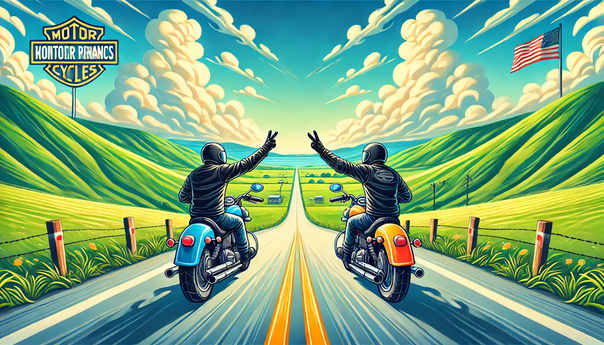
Discover the meaning and etiquette of the biker wave, a universal symbol of camaraderie among riders. Learn why it matters and how to keep it alive.
The biker wave—two fingers pointed downward—is more than a simple gesture. It’s a salute, a bond, and a universal message that embodies the spirit of motorcycling. As a rider, this subtle yet powerful wave connects you with a global family of motorcycle enthusiasts, signaling respect, camaraderie, and the heartfelt wish to “keep two wheels down.” In this guide, we’ll delve into the origins, significance, and etiquette of this iconic symbol.
The Origins of the Biker Wave
How Two Fingers Came to Define Brotherhood
The biker wave has been around for decades, but its origins are somewhat mysterious. Some say it started with the advent of motorcycles in the early 20th century when riders recognized the rarity of fellow enthusiasts and acknowledged one another on the road. Others attribute it to legendary figures like Harley-Davidson founders or even iconic motorcyclist Steve McQueen.
No matter its roots, the wave evolved into a silent nod of appreciation and respect among riders. It transcends brands, styles, and nationalities, creating an unspoken code of conduct that connects bikers worldwide. #MotorcycleCulture #BikerOrigins
Why the Two-Finger Gesture?
The Meaning Behind “Keep Two Wheels Down”
The two-finger wave pointed downward carries a practical and philosophical meaning. At its core, it’s a reminder to keep your tires firmly on the road—a wish for safe travels and avoiding accidents.
Symbolically, the two fingers also represent the two wheels of a motorcycle, emphasizing the unique bond bikers share. It’s a way of saying, “I see you, I respect you, and we share the same passion.” This simple gesture reminds us that the open road belongs to everyone. #RideSafe #TwoWheels
The Universal Appeal of the Biker Wave
Bridging Styles, Brands, and Borders
One of the most remarkable aspects of the biker wave is its inclusivity. Whether you ride a Harley-Davidson cruiser, a sleek sportbike, a sturdy adventure motorcycle, or even a vintage Vespa, the wave transcends boundaries.
This universal symbol emphasizes the shared love of freedom, adventure, and the thrill of the ride. It doesn’t matter if you’re a seasoned road warrior or a weekend rider—when you extend that two-finger salute, you’re part of a community that cherishes the open road. #BikerCommunity #UnitedByRide
When and How to Wave
The Etiquette of the Biker Salute
Timing is everything when it comes to the biker wave. Here are some tips to keep in mind:
When to Wave: The wave is best exchanged on two-lane roads or highways where you can safely acknowledge oncoming riders. In heavy traffic or at stoplights, a nod may suffice.
How to Wave: Extend your left hand slightly below handlebar level, with two fingers pointed downward. This ensures visibility without compromising control.
When to Skip It: Safety comes first. If conditions are hazardous or your hands are occupied, it’s okay to skip the wave.
Remember, the biker wave is about connection, not obligation. Don’t stress if you miss one. #RideWithRespect #WaveEtiquette
The Psychology of the Wave
Why Connection Matters on the Open Road
The biker wave is more than a habit; it’s a psychological boost. Riding can be a solitary activity, and seeing another rider acknowledges you fosters a sense of belonging.
This gesture also reflects the unspoken understanding among bikers—that we all face the same challenges, joys, and risks. The wave is a tiny reminder that, no matter where you’re headed, you’re never truly alone. #MentalHealth #BikerBrotherhood
Modern Perspectives on the Biker Wave
Is It Fading or Thriving?
Some argue that the biker wave is losing its prominence, particularly in areas with a high concentration of riders. However, others believe it’s as strong as ever, evolving with the times while retaining its core significance.
Social media platforms and online forums have also helped reinforce the wave’s importance, with riders sharing stories and celebrating their encounters. New generations of riders are adopting the wave, ensuring its legacy continues. #ModernRiding #TraditionsLiveOn
Embracing the Tradition: Why It Matters
Keeping the Spirit of the Biker Wave Alive
By participating in the biker wave, you’re not just acknowledging another rider—you’re preserving a tradition that embodies the essence of motorcycling. It’s a reminder to ride with respect, cherish the journey, and honor the community that makes this lifestyle so special.
So, the next time you’re on the road and spot a fellow rider, extend those two fingers downward. Feel the connection, the unity, and the shared love for the open road. In that moment, you are part of something bigger—a global brotherhood bound by two wheels. #BikerWave #RideOn
